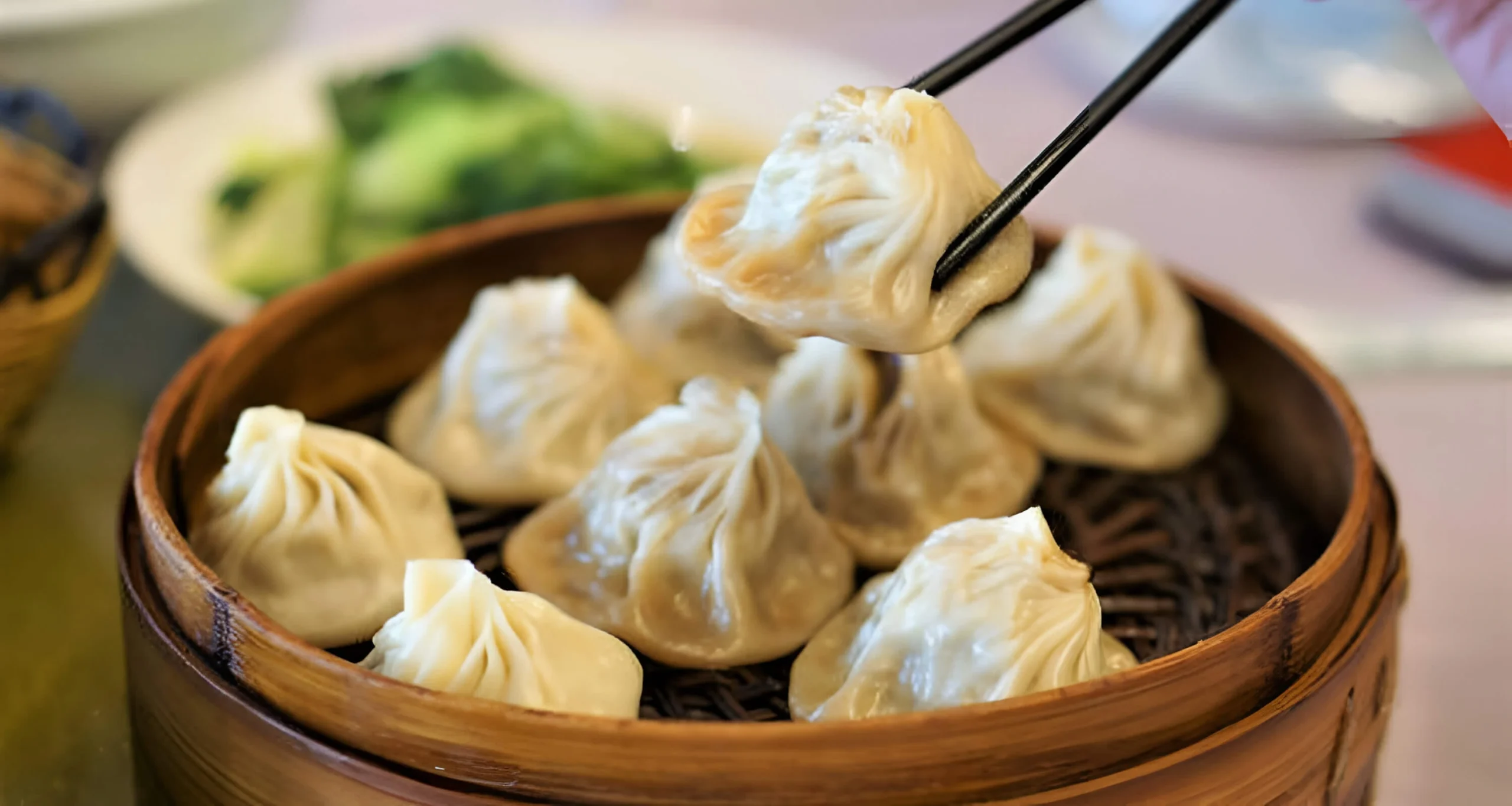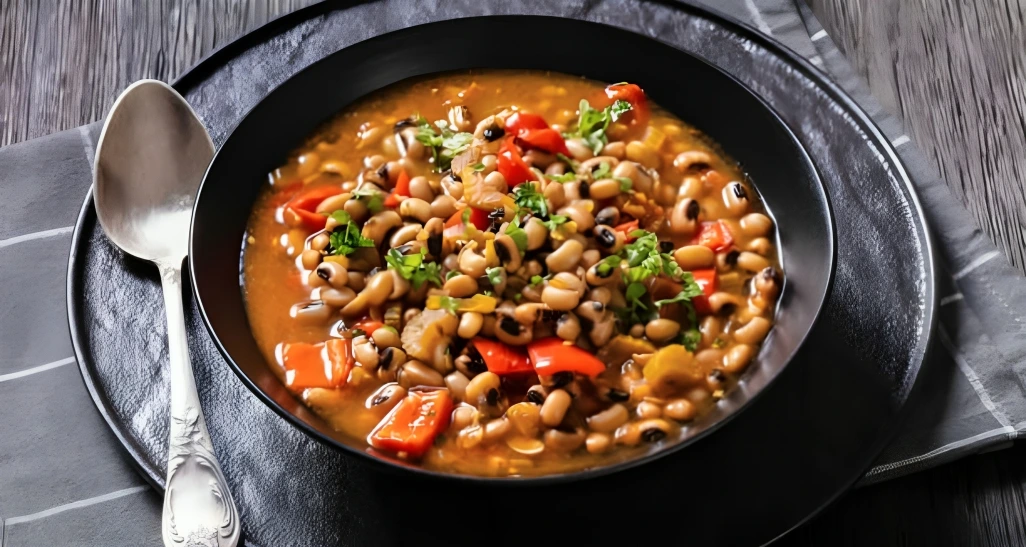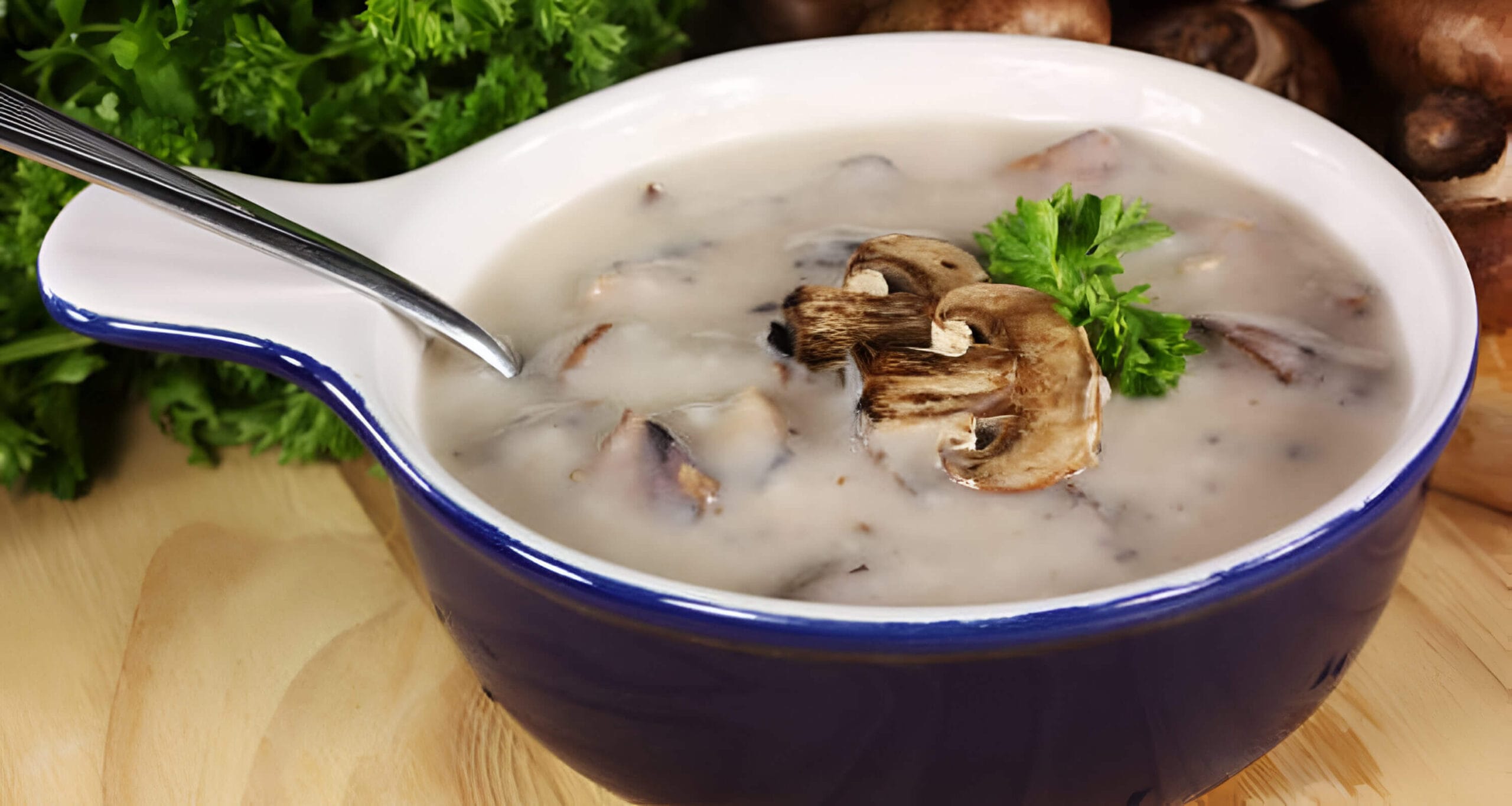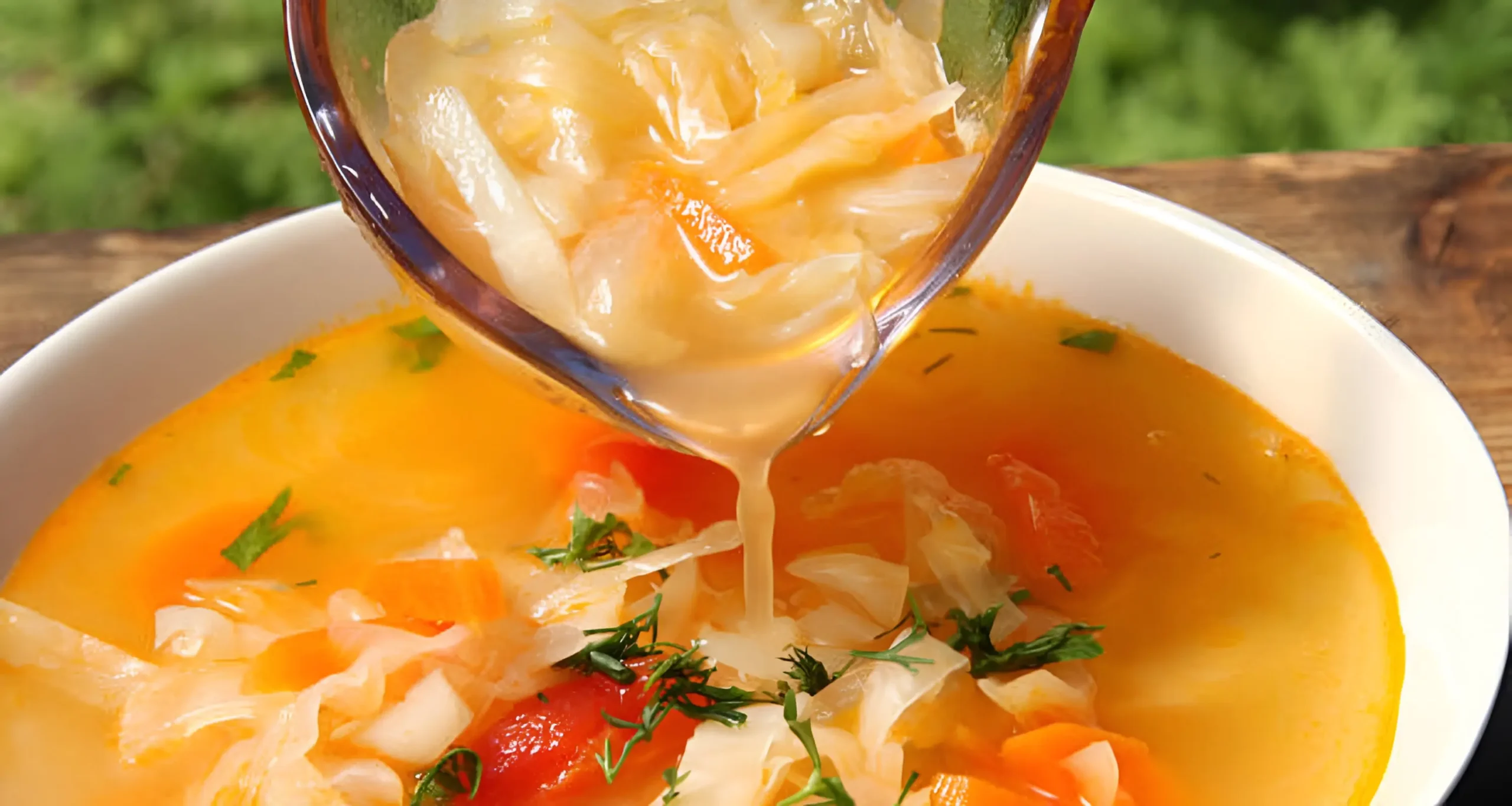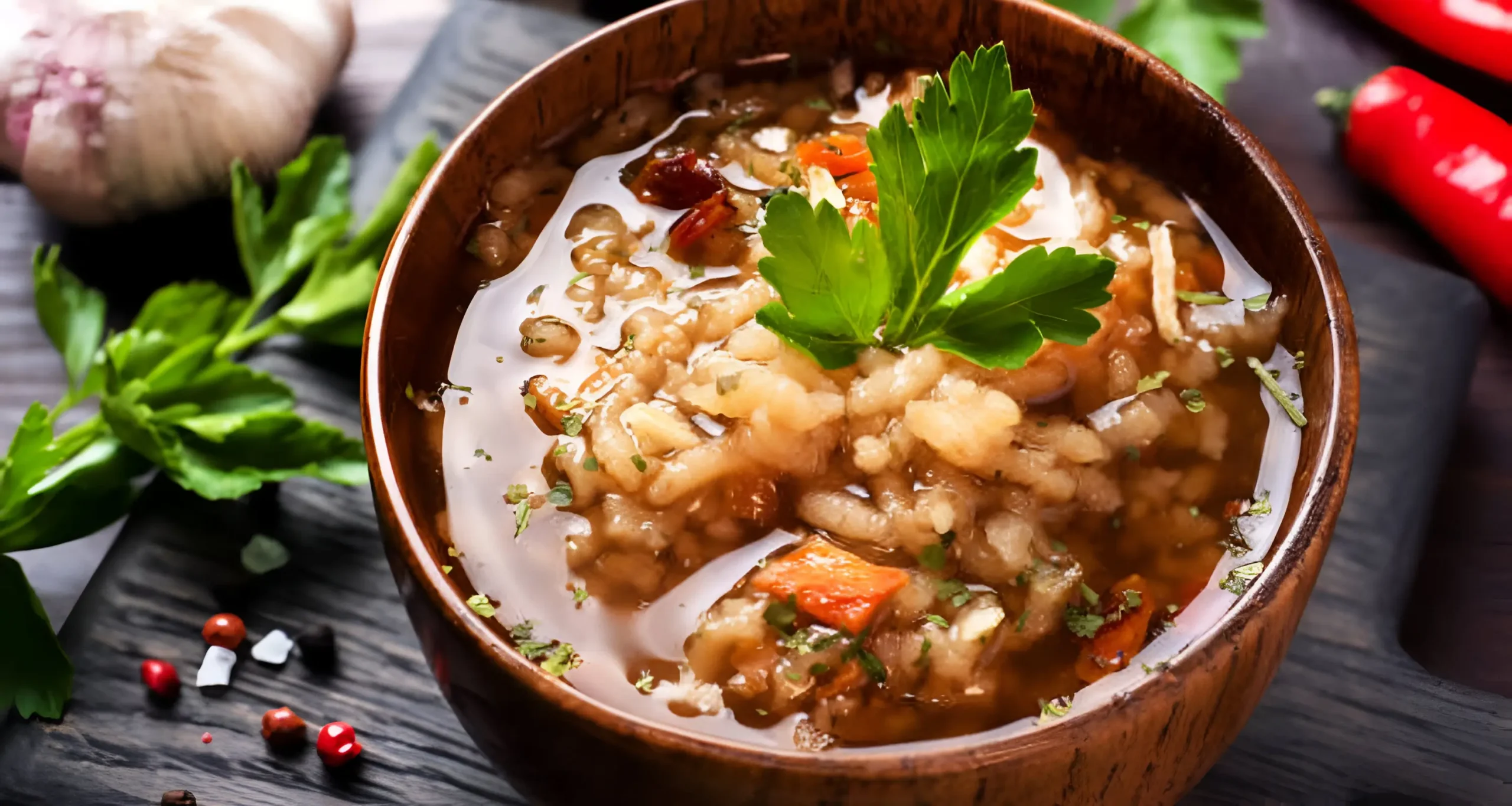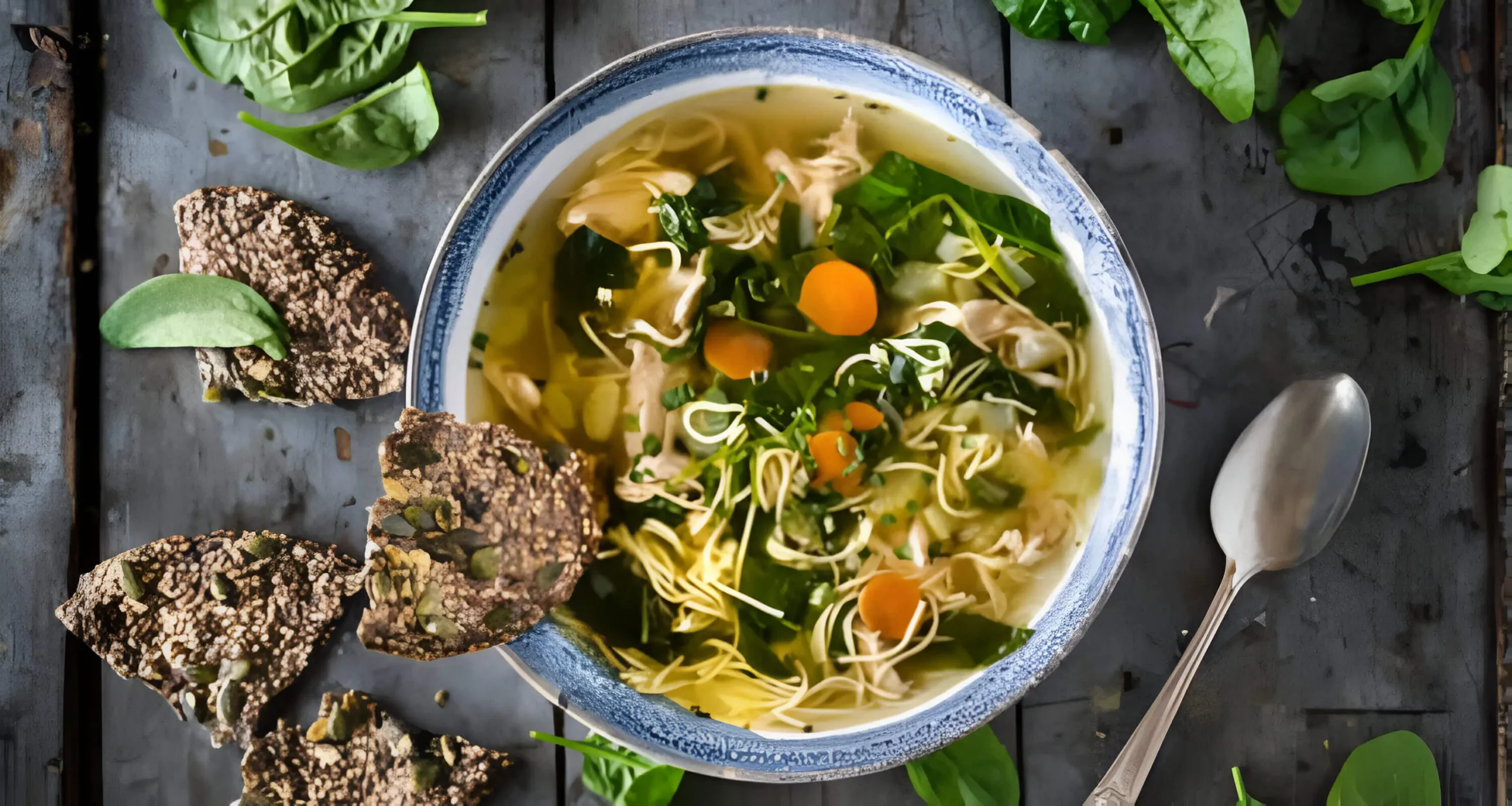Hot and Sour Soup: 10 Quick Ways to Make It Healthier

Ever felt comforted by a warm bowl of hot and sour soup after a long day? It’s the tang of vinegar or the warmth of ginger that does it. Cooking at home, you want that comfort without the guilt. Less sodium, less saturated fat, and more veggies and protein to keep you full.
This guide will show you how to make hot and sour soup healthier. You’ll learn ten easy swaps and techniques. These tweaks will lower sodium, boost fiber and protein, and keep the flavor you love.
This article is for home cooks in the United States. It offers clear, actionable steps to start making changes today. Each section explains why a change is important, the best ingredient or technique, and quick tips to get you started. By the end, you’ll know how to make hot and sour soup healthier without losing its taste.
Key Takeaways
- Small swaps can cut sodium and saturated fat while keeping flavor.
- Choose lower-sodium broths and lean proteins like chicken breast or tofu.
- Add vegetables and mushrooms to increase fiber and umami.
- Use natural thickeners and less oil to reduce calories.
- Taste and adjust with vinegar, citrus, and spices instead of sugar.
Why healthier Hot and Sour Soup matters for your diet
Quick meals are a must for busy lives. Hot and Sour Soup can be a healthy choice. It contributes hydration, essential vitamins, and a boost of protein to your daily intake.
Opting for a healthier version keeps your meals tasty without the risks. This helps reduce the risk of high blood pressure and limits intake of saturated fats.
Nutrition benefits of traditional hot and sour soup
Classic Hot and Sour Soup typically includes a flavorful broth, mushrooms, tofu, and eggs. These ingredients provide hydration, B vitamins, and amino acids. Mushrooms add potassium and selenium, boosting immunity and cellular health.
This soup can be low in calories. It’s a good way to get veggies and a light protein source. It’s perfect for a balanced weeknight meal.
Common unhealthy elements to watch for
Restaurant or store-bought soups can be high in sodium. Cornstarch, sugar, fried toppings, and fatty meats increase calories and saturated fat. These elements are not good for heart health or weight control.
Be mindful of portion sizes and ingredients. A seemingly healthy bowl might have a lot of salt and refined starches. These can undo the soup’s nutritional benefits.
How small swaps can improve overall meal quality
Small changes can make a big difference. Use low-sodium broth and lean proteins like chicken or tofu. Add more veggies for fiber.
Replace cornstarch with pureed veggies or a bit of arrowroot. This keeps the soup’s texture. Reducing oil and omitting fried toppings lowers both calories and saturated fat. These tweaks make your soup a better choice for frequent meals.
Choose lower-sodium broths and stocks for better heart health
Choosing the right broth can change your whole meal. A lighter broth has less sodium but keeps the flavor. This way, your heart and taste buds both benefit. Use low-sodium broth for an easy hot and sour soup at home.
Reading labels: what to avoid on broth packaging
Check the nutrition facts for sodium. Look for under 140 mg per serving. Avoid products with monosodium glutamate (MSG) if you want to limit salt.
Also, watch out for added sugar and hydrolyzed vegetable protein. They can hide high sodium. Choose simple ingredients for a better broth.
How to make a low-sodium homemade broth quickly
Simmer onion, carrot, celery, garlic, ginger, and mushrooms with chicken bones or tofu for 30–45 minutes. Strain and season at the end to keep salt low.
Use an Instant Pot or pressure cooker for 20–30 minutes. Enhance the taste with rice vinegar and low-sodium soy sauce.
Best store-bought low-sodium options for convenience
Look for trusted brands in U.S. supermarkets. Pacific Foods Low Sodium Chicken Broth, Swanson 33% Less Sodium Chicken Broth, and Imagine Foods Organic Low-Sodium Vegetable Broth are good choices.
If only full-sodium broth is available, mix it half-and-half with water. This makes a lighter base. Mixing store-bought low-sodium broth with homemade stock adds depth while keeping sodium low.
| Option | Typical Sodium (per cup) | Best use |
|---|---|---|
| Pacific Foods Low Sodium Chicken Broth | Under 140 mg | Ready-made hot and sour soup broth with consistent flavor |
| Swanson 33% Less Sodium Chicken Broth | Reduced vs. regular | Convenient swap for classic recipes |
| Imagine Foods Organic Low-Sodium Vegetable Broth | Under 140 mg | Vegetarian base for an easy hot and sour soup |
| Homemade quick pressure-cooked stock | You control sodium | Best for tailoring flavor and heart-friendly bowls |
Boost protein smartly without adding saturated fat
You can add more protein to hot and sour soup without using saturated fat. Choose lean cuts and plant proteins that cook quickly. This keeps the broth light and flavorful.
Lean protein choices: chicken breast, tofu, shrimp
Skinless chicken breast, peeled shrimp, and firm tofu are great for lean protein. Chicken slices cook in three to five minutes and stay tender. Shrimp cooks in two to three minutes, but overcooking makes it tough.
Firm tofu holds its shape when cubed. This adds bite without extra fat.
Plant-based proteins for vegetarian hot and sour soup
For vegetarian soup, use extra-firm tofu, tempeh, and edamame. Press and sear tofu for a golden crust. Tempeh has a nutty taste, while edamame adds color and protein.
Small amounts of miso and sautéed mushrooms bring a savory flavor. This flavor is similar to meat.
How to add protein while keeping texture and flavor
Add proteins near the end of cooking to keep texture. Stir in shrimp last and simmer briefly. Thin chicken strips cook quickly when added to hot broth.
Gently stir silken tofu to warm it without breaking. For vegetarian options, fold in seared tempeh or edamame at the end. This keeps their shape.
| Protein | Prep Tip | Cook Time in Soup | Why it works |
|---|---|---|---|
| Skinless chicken breast | Slice thin against the grain | 3–5 minutes | Leans low in saturated fat and stays tender when sliced thin |
| Peeled shrimp | Devein and pat dry | 2–3 minutes | Cooks fast and adds seafood flavor to shrimp hot and sour soup |
| Firm or extra-firm tofu | Press, cube, and sear lightly | Warm through at end | Maintains texture for vegetarian hot and sour soup |
| Tempeh | Slice thin and pan-sear | Warm 2–3 minutes | Nutty flavor and firm bite enhance mouthfeel |
| Edamame | Shelled, blanched | 1–2 minutes | Bright color and plant protein boost without fat |
| Miso (small amount) | Dissolve in warm broth | Add at end, do not boil | Adds umami for depth in vegetarian versions |
Load up on vegetables for fiber and vitamins
Incorporate a mix of vegetables to boost both flavor and nutrition in your hot and sour soup, providing fiber, vitamins, and a satisfying crunch. Choose veggies that stay firm after a quick simmer to keep your soup lively.
High-impact vegetables that hold up in soup
Carrots and bell peppers add color and sweetness. Baby bok choy and napa cabbage soften but don’t get mushy. Snow peas and sugar snap peas add a crisp, refreshing texture to the soup.
Root veggies like parsnips or daikon add fiber and heartiness for a fuller soup.
How to prepare and add greens for extra nutrients
Add delicate greens such as baby spinach or bok choy in the final minute to keep them vibrant and tender. This keeps them bright and full of nutrients. Slice tough stems thin and add them early to cook through and flavor your soup.
Using mushrooms and bamboo shoots for authentic texture
Shiitake, oyster, or cremini mushrooms add a meaty flavor. Include fresh or canned bamboo shoots to give the soup a satisfying crunch. Rinse canned bamboo shoots to reduce sodium.
Mixing mushrooms and bamboo shoots with spicy veggies like peppers or carrots creates a great texture.
Reduce oil and fried ingredients to cut calories
Lower calories and keep bold taste by swapping fried elements for baked, air-fried, or pan-seared options. Small changes make a big difference when you want to reduce oil hot and sour soup without losing crunch or mouthfeel.
Try baked or air-fried tofu for crisp edges with very little oil. Press extra water from firm tofu, toss with a teaspoon of avocado oil or a quick spray, then bake at high heat until golden. This method makes a crispy-textured, no-fry tofu hot and sour soup, reducing calories from deep-frying while maintaining bite.
Swap out fried toppings such as wonton strips for lightly toasted nuts or seeds to keep crunch with fewer calories. A tablespoon of toasted sesame seeds or sliced almonds adds crunch and healthy fats without the heavy batter. Use low-sodium soy or a light drizzle of sesame oil for aroma instead of pouring oil into the pot.
When building flavor, start by sautéing aromatics—garlic, ginger, white pepper—in one teaspoon of neutral oil. Deglaze with broth or rice vinegar to lift browned bits. Use a hot, quick sear on proteins to create a caramelized crust that tastes rich while keeping fat minimal.
Nonstick pans and measured amounts help you control intake. Most bases need only 1–2 teaspoons of oil to bloom spices and bind flavors. Finish with a light teaspoon drizzle of oil or a small swipe of chili oil for mouthfeel without large calorie increases, making it easy hot and sour soup low fat in practice.
Use these methods together: bake tofu, toast toppings, measure oil, and sear proteins. You get satisfying texture, bold aroma, and a bowl that supports your goals to reduce oil hot and sour soup while enjoying a classic dish.
Use natural thickeners instead of cornstarch overload

Thickening your hot and sour soup doesn’t mean you must load it with cornstarch. You can get a rich mouthfeel and keep calories and refined starch low by choosing natural options. A few smart swaps let you keep the classic tang and heat while improving nutrition.
Arrowroot and tapioca are great cornstarch alternatives hot and sour soup cooks reach for when they want clarity and shine. These starches gel at lower concentrations, so you use less powder to get a glossy finish. For a lighter finish, mix 1 teaspoon of arrowroot with an equal amount of cold water to form a slurry, then stir it in near the end of cooking.
If you prefer added nutrition, pureed vegetables like cauliflower or white beans add body without extra refined starch. Purees boost fiber and keep the soup feeling substantial. A small amount blended into the broth can replace a thicker slurry and raise the protein and vitamin content.
Silky hot and sour soup texture comes from timing and gentle heat. Gradually stir in a small amount of slurry, then take the pot off high heat. This helps maintain a smooth texture and a glossy finish without curdling. With arrowroot hot and sour soup, avoid vigorous boiling after you add the starch to preserve the smooth finish.
To avoid clumps, always dissolve your thickener in cold water first. Add the mixture in slow increments while stirring constantly. If you find small lumps, use an immersion blender or a fine-mesh sieve to smooth the broth quickly.
Use the table below to compare quick options so you can pick the best cornstarch alternatives hot and sour soup recipes need.
| Thickener | Amount for 4 cups | Texture Result | Notes |
|---|---|---|---|
| Arrowroot | 1–1.5 tsp slurry | Clear, glossy, light | Mix with cold water; avoid boiling after adding |
| Tapioca starch | 1–2 tsp slurry | Glossy, slightly thicker than arrowroot | Works well at lower temps; adds sheen |
| Cauliflower puree | 1/2 cup cooked, blended | Creamy, full-bodied | Add earlier for smooth integration; boosts fiber |
| White bean puree | 1/3 cup cooked, blended | Velvety, hearty | Adds protein; mild flavor that won’t overpower |
| Small cornstarch slurry | 1 tsp cornstarch + cold water | Thick, traditional | Use minimal amount to avoid heavy mouthfeel |
Cut back on sugar and balance acidity naturally
Sweetness in hot and sour soup softens vinegar and balances salty flavors. You can cut down on sugar without losing that rounded taste. Focus on acids and savory balance instead.
Why sugar appears in recipes
A small amount of sugar can mellow the acidity of vinegar and enrich the flavor of low-sodium broths. A small amount can also hide bitterness from mushrooms or dark soy. You don’t need much when you balance acidity and umami well.
Vinegar and citrus alternatives
Choose milder vinegars for a softer tang. Rice vinegar, for example, brightens without sharpness, making it easier to balance. For Thai soups, use a bit of lime to control acidity without refined sugar.
Tasting tips to maintain balance
Add acid in small amounts, stir, then taste. If it’s too bright, smooth it with grated carrot or roasted red pepper instead of sugar. Low-sodium soy sauce or tamari can deepen savory notes and reduce the need for sweetening.
Use this quick comparison to guide swaps for less sugar and better acidity.
| Ingredient | Role in Soup | Low-sugar Swap |
|---|---|---|
| White distilled vinegar | Sharp acidity, can taste harsh | Rice vinegar for milder tang |
| Granulated sugar | Rounds flavors and masks sharpness | Grated carrot or roasted bell pepper |
| Dark soy sauce | Sweet-salty depth | Low-sodium soy or tamari for umami |
| Lime or lemon juice | Fresh acidity and brightness | Use in small amounts to control thai hot and sour soup acidity |
| Apple cider vinegar + orange | Complex sweet-tart note | Diluted cider vinegar with a splash Add a splash of fresh orange juice to naturally sweeten hot and sour soup while keeping sugar content low. |
Flavor with herbs, spices, and umami-rich ingredients
Good flavor lets you cut salt and fat without losing the soul of the bowl. Focus on bright aromatics, a careful heat progression, and deep savory notes. This creates a balanced, satisfying soup. Use a few targeted ingredients and let each one shine.
Using white pepper, chili paste, and fresh ginger
Use a pinch of white pepper to achieve the traditional peppery note that complements vinegar and soy. Add gradually and adjust to taste. This avoids overpowering delicate mushrooms or tofu.
Fresh ginger gives warmth and lift. Grate or thinly slice it and add early. This way, the broth gains subtle spice. For controlled heat, stir in a teaspoon of chili paste like Sriracha or sambal oelek near the end.
Low-sodium umami boosters: mushrooms, tomato paste, miso
Rehydrated shiitake mushrooms and their soaking liquid provide rich depth with little added sodium. Incorporate the mushroom soaking liquid into your broth to enhance flavor and umami. This amplifies natural savory tones.
A small spoonful of tomato paste rounds flavors and improves mouthfeel without extra salt. White or brown miso adds fermented complexity. Dissolve it in warm broth off the heat to preserve probiotics and avoid graininess.
When to use spicy hot and sour soup elements to suit your taste
Season the broth lightly, allowing each person to adjust flavors to their taste when serving. Offer chili oil, crushed red pepper, or extra vinegar for those who prefer more punch.
For readers crafting a white pepper hot and sour soup, emphasize the pepper early. Let aromatics build slowly. If you want an umami hot and sour soup, layer mushrooms, miso, and a touch of tomato paste. This creates depth without relying on salt.
When aiming for a spicy hot and sour soup, add heat in stages. This gives you control and prevents one-note spice. Serve condiments on the side so aroma and heat stay fresh for every bowl.
Make it vegetarian or vegan without losing classic flavor

Transform your favorite bowl into a plant-based delight. Focus on depth, texture, and balance. Start with a rich, meat-free stock. Use layers of umami and bright acid to keep the soup lively without animal products.
Build a rich base
Start with a low-sodium vegetable broth. Add liquid from dried shiitake mushrooms and simmer kombu (kelp). Mix in a bit of low-sodium tamari for savory depth. These steps create a solid base for a vegetarian umami hot and sour soup that’s both deep and satisfying.
Protein and texture swaps
Use firm tofu or tempeh cubes for texture. Edamame adds protein and a fun pop. For a meaty bite, try seared king oyster mushrooms. These changes keep the soup hearty and filling, staying true to vegetarian hot and sour soup goals.
Seasoning and umami tricks
Balance acidity with rice vinegar and enhance flavor with white miso. A little toasted sesame oil adds aroma. For extra savory flavor, add nutritional yeast or tomato paste. These tips help your vegan hot and sour soup match the original’s rich taste.
Quick assembly tips
- Soak shiitake ahead for richer broth.
- Sear mushrooms on high heat to develop chewiness.
- Add miso at the end to protect live cultures and flavor.
With these methods, you can craft a vibrant, layered vegetarian hot and sour soup or a bold vegan version. The result is a dish that meets both flavor and nutritional needs.
Quick and easy hot and sour soup modifications for busy cooks
When time is short, smart methods let you enjoy a bright, nourishing bowl without fuss. Use practical swaps and simple routines to keep flavors bold and prep light. These tips focus on speed, storage, and pantry-friendly choices that fit weeknight life.
Make a one-pot hot and sour soup by sautéing garlic, ginger, and scallions in a Dutch oven. Combine low-sodium broth with sliced mushrooms, bamboo shoots, and a lean protein like shredded chicken or silken tofu. Gently thicken with an arrowroot slurry, season with rice vinegar and cracked white pepper, and optionally swirl in a beaten egg for a smooth, ribboned texture.
To save cleanup, cook everything in one vessel. That concentrates flavor and cuts time spent at the sink. A single pot also makes scaling the recipe simpler for family meals.
For meal prep hot and sour soup, cook and cool the seasoned broth and hearty vegetables, then chill for up to three days. Freeze portions for longer storage, leaving out cornstarch-thickened mixtures and delicate greens. Reheat the base, add quick-cooking ingredients, and adjust acidity just before serving.
Label your containers with date and protein so you can rotate through meals easily. Frozen bases reheat quickly in a saucepan or in an Instant Pot on the sauté setting.
Rely on pantry staples to speed cooking. Keep canned bamboo shoots, jarred chili paste, low-sodium broth, canned mushrooms, rice vinegar, tamari, and arrowroot on hand. Shelf-stable tofu or canned chicken works when fresh protein is not available.
These shortcuts help you pull together an easy hot and sour soup fast without losing the signature tang and heat. Small steps up front save time later and keep weeknight dinners fresh and satisfying.
Regional variations and inspiration: Chinese, Thai, and fusion ideas
Explore different styles to make your recipe fresh without losing balance. Start by noting key ingredients and textures that define each tradition. Small swaps can keep flavor while cutting sodium, excess starch, and calories.
Chinese traditions use white pepper, bamboo shoots, wood ear mushrooms, and egg ribbons for a hearty feel. To make chinese hot and sour soup healthier, reduce cornstarch, use low-sodium broth, add extra mushrooms and tofu, and skip fried toppings.
Thai-style hot and sour soups highlight bright aromatics such as lemongrass, kaffir lime leaves, and galangal, balanced with fish sauce and lime juice. For a healthier twist at home, opt for reduced-sodium fish sauce or diluted tamari, and enhance flavor with fresh herbs and a squeeze of lime.
Fusion approaches mix textures and aromatics. Try combining Chinese mushrooms and silken tofu with Thai lemongrass and cilantro for a lighter, herb-forward bowl. Use whole-grain noodles, spiralized vegetables, or cauliflower rice to make a satisfying base that keeps calories in check.
For spice lovers, experiment with spicy hot and sour soup variations by adjusting chili paste, white pepper, or fresh chilies. Keep a clear plan for heat so the broth stays balanced and nourishing.
Use these ideas to build a bowl that suits your taste and health goals. Blend traditions carefully, focus on fresh produce and low-sodium swaps, and you will enjoy a more wholesome take on classic hot and sour soup styles.
Conclusion
You can make Hot and Sour Soup healthier without losing its bold flavors. Lowering sodium and choosing lean proteins like chicken breast or firm tofu boosts nutrition. Adding more mushrooms and greens also helps.
Swap commercial broths for low-sodium stock to cut down on salt. Use arrowroot or pureed vegetables as thickeners. Cutting oil and fried toppings reduces calories without losing texture.
Most changes are simple and quick. Swap in low-sodium broth, rice vinegar, and miso to boost umami while keeping the soup flavorful and healthy. Adding arrowroot for silkiness and a splash of fresh vinegar or chopped cilantro at the end makes it healthy in minutes.
Try one or two swaps on your next batch. Keep pantry staples like low-sodium broth, rice vinegar, arrowroot, miso, and firm tofu ready. Adjust regional elements to fit your goals. Use these tips to enjoy a nourishing bowl that suits your diet and busy life.
FAQ
What are the easiest swaps to make Chinese hot and sour soup healthier?
Start with low-sodium broth and swap fatty meat for skinless chicken, shrimp, or tofu. Use a small amount of arrowroot or pureed veggies instead of cornstarch. Add more mushrooms and leafy greens for fiber and umami.Reduce oil to 1–2 teaspoons for sautéing. Finish with rice vinegar or lime instead of sugar. This keeps the spicy flavor while cutting sodium and saturated fat.
How can you quickly make a low-sodium broth at home for hot and sour soup?
Simmer onion, carrot, celery, garlic, ginger, and mushrooms with chicken bones or tofu for 30–45 minutes. Or use an Instant Pot to save time. Strain and season at the end to control salt.If you only have full-sodium broth, dilute it 50/50 with water. Boost flavor with mushroom soaking liquid, low-sodium tamari, and fresh aromatics.
What vegetarian or vegan protein options work best in vegetarian hot and sour soup?
Use extra-firm tofu, tempeh, edamame, seitan, or king oyster mushrooms for texture. Add proteins near the end to keep texture. Stir in a small spoonful of miso off the heat for extra depth, and use dried shiitake soaking liquid to enhance umami without adding animal products.
What’s the best way to thicken hot and sour soup without relying too much on cornstarch?
Use arrowroot or tapioca starch in small amounts. Mix into cold water as a slurry first. Alternatively, you can blend in puréed cauliflower, white beans, or parsnips to add body and fiber. Always add thickeners gradually at the end, using gentle heat to maintain a smooth texture. Arrowroot gives clarity and gloss but should not be boiled vigorously after adding.
Can you keep the spicy hot and sour soup heat while reducing sodium and sugar?
Yes. Add white pepper, fresh ginger, and controlled amounts of chili paste for heat. Replace sugar with mild rice vinegar, lime juice, or grated carrot/roasted bell pepper.Taste as you go and offer chili oil or flakes at the table. This way, everyone can adjust spice level.
What vegetables hold up best in hot and sour soup and boost fiber?
Carrots, bell peppers, baby bok choy, napa cabbage, snow peas, and snap peas keep texture with brief simmering. Add tender greens such as spinach or bok choy leaves during the last 1–2 minutes of cooking. Incorporate shiitake, oyster, or cremini mushrooms and rinsed bamboo shoots to achieve authentic texture and deep umami flavor.
How much oil do you really need when making hot and sour soup?
Most recipes need only 1–2 teaspoons of oil to sauté aromatics and develop flavor. A light drizzle (about 1 teaspoon) at the end adds mouthfeel. Measure oil to reduce calories.Use neutral oils like avocado or canola, or nonstick techniques to minimize added fat.
Are there convenient store-bought low-sodium broths you can trust?
Yes. Look for brands like Pacific Foods Low Sodium Chicken Broth, Swanson 33% Less Sodium Chicken Broth, and Imagine Organic Low-Sodium Vegetable Broth. Check labels for sodium per serving (aim under 140 mg).Avoid products with added sugar, hydrolyzed vegetable protein, or unexpected high-sodium flavorings.
What strategies can busy cooks use to prepare a quick hot and sour soup while still meeting their health objectives?
Use a one-pot method: sauté aromatics, add low-sodium broth, quick-cooking vegetables, and protein, finish with a small slurry or pureed vegetable, plus vinegar and herbs. Prep a base for the week, refrigerate up to 3 days, or freeze broth and heartier vegetables separately.Keep pantry staples—rice vinegar, arrowroot, tamari, canned bamboo shoots, and jarred chili paste—for fast, healthy versions.
What are safe ways to adapt Thai hot and sour soup (tom yum) for lower sodium?
Emphasize fresh aromatics—lemongrass, kaffir lime leaves, galangal—and use reduced-sodium fish sauce or dilute regular fish sauce with water or tamari. Rely on lime juice, fresh chiles, and herbs for brightness instead of added salt.Combine elements like mushrooms and tofu from Chinese hot and sour soup with Thai aromatics for a lighter, herb-forward bowl.
How do you recreate the classic texture of Chinese hot and sour soup when making it vegetarian?
Use a combination of firm tofu, rehydrated shiitake, and bamboo shoots for chew and bite. Incorporate a small amount of arrowroot for a glossy finish, and stir in a teaspoon of white miso or a hint of tomato paste to enhance umami. For the classic ribboned texture, gently fold in beaten silken tofu or a whisked egg alternative to keep it plant-based.
Will arrowroot or tapioca change the flavor of the soup?
Correct—both arrowroot and tapioca starch are flavor-neutral thickeners that create a glossy, clear finish and achieve the desired thickness at lower amounts than cornstarch. Pureed vegetables used as thickeners will add a mild sweetness or earthiness, so taste and balance with acid and umami as needed.
How should you season hot and sour soup to reduce reliance on salt while keeping bold flavor?
Build layers of flavor with aromatics (garlic, ginger), white pepper, mushroom soaking liquid, low-sodium tamari, miso in small amounts, and acid (rice vinegar or lime). Use toasted sesame oil sparingly for aroma and finish with fresh herbs like cilantro.These elements let you cut sodium without losing the savory, tangy profile.
Can you freeze hot and sour soup, and how do you preserve texture?
You can store the broth and heartier vegetables in the freezer for up to three months. However, avoid freezing soups that are thickened with cornstarch or contain delicate leafy greens, as their texture may suffer. Reheat the base, then add quick-cooking ingredients—fresh greens, tofu, shrimp, or a fresh slurry—just before serving.
Add a Dash of Your Thoughts!
There are no reviews yet. Be the first one to write one.

